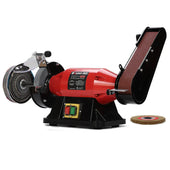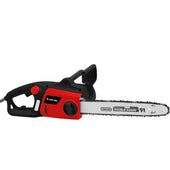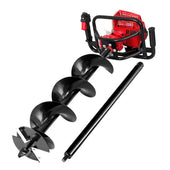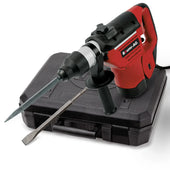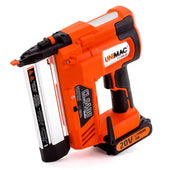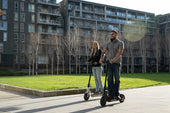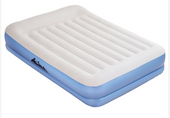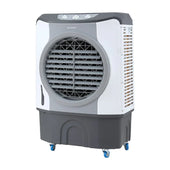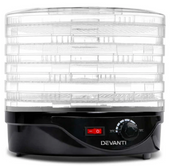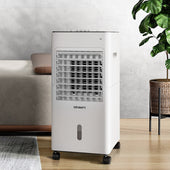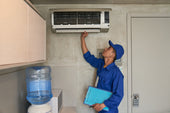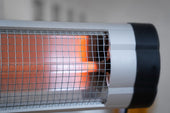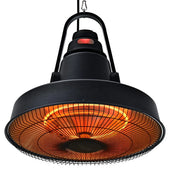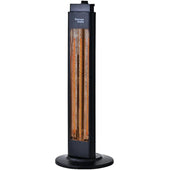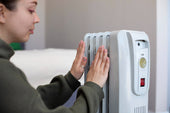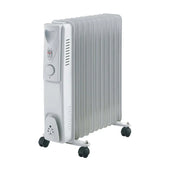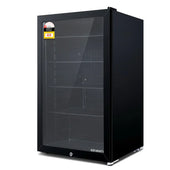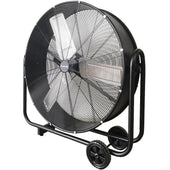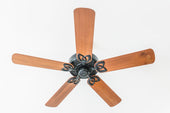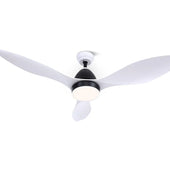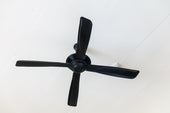Introduction: Why Trampolines Are Perfect for Both Fun and Fitness
Trampolines offer a unique blend of enjoyment and physical activity that appeals to children of all ages. As a recreational activity, trampolining allows children to expel energy while experiencing the thrill of jumping and bouncing. From an exercise perspective, it engages multiple muscle groups, enhances coordination, and promotes cardiovascular health.
The act of bouncing on a trampoline encourages better motor skills and balance, which are crucial during a child’s developmental years. Furthermore, the repetitive yet dynamic movement triggers the release of endorphins, naturally boosting mood and energy levels. By combining active play with health benefits, trampolines cater to both fun and fitness seamlessly.
Key Factors to Consider Before Buying a Trampoline
- Size and Space Requirements: Consider the available outdoor or indoor space before purchasing. Ensure there's enough clearance around the trampoline to enhance safety.
- Weight Limit and Usage: Check the maximum weight capacity to ensure it suits the number of users, whether for one child or multiple children.
- Safety Features: Look for safety nets, padded frames, and spring covers, which reduce the risk of injury during use.
- Age Appropriateness: Certain trampolines have designs tailored for specific age groups, from toddlers to older children.
- Durability and Material Quality: Durable materials, including rust-resistant frames and tear-resistant mats, prolong the trampoline’s lifespan.
- Ease of Assembly: Simplified setup manuals and installation hardware are essential for hassle-free assembly.
Safety First: Features to Look for in Family-Friendly Trampolines
When choosing a trampoline for children, prioritising safety is crucial. Models with an enclosure net secure users and prevent accidental falls. Spring-free designs minimise risks of pinching or injury, offering a safer alternative to traditional springs. Look for padded edges or frame covers to shield jumpers from hard surfaces. Sturdy frames made of galvanised steel ensure durability and reduce the chance of structural failures. Weight capacity is an essential consideration, ensuring safe use for multiple participants. Anti-slip, weather-resistant mats enhance traction and usability in varying conditions. Ensure the trampoline adheres to recognised safety standards such as EN71 certification for added peace of mind.
Round, Rectangular, or Oval: Which Shape Best Suits Your Needs?
When selecting a trampoline, shape plays a significant role in its functionality and overall suitability for children. Round trampolines are ideal for recreational use, as their design naturally guides users to the centre, offering enhanced safety for younger kids. Rectangular trampolines, commonly favoured by gymnasts, provide a consistent bounce that covers the entire surface, making them suitable for advanced activities and training. Oval trampolines offer a blend of features, balancing central safety with additional jumping space along the longer sides. These may be ideal for larger families or multiple users. Each shape supports varying levels of usage, space, and age versatility.
Size Matters: Choosing the Right Size for Your Space and Usage
Selecting the right trampoline size is crucial for ensuring both safety and practicality. Trampolines come in various sizes, typically ranging from 6 to 16 feet in diameter. Smaller trampolines work well for indoor spaces or younger children, while larger ones are ideal for families with older kids or those with spacious gardens.
Key factors to consider include:
- Available space: Measure the area and leave at least 1.5 metres of clearance around the trampoline.
- User age and number: Larger trampolines accommodate more users and offer higher weight limits.
- Intended activities: Fitness trampolines differ from recreational models in design and size.
Prioritising size ensures a safe and enjoyable experience.
Top 5 Trampolines for Ultimate Family Fun and Fitness
Trampolines come in various sizes and styles to suit diverse family needs. Here are five excellent options for fun and fitness:
1. Springfree Trampoline
- Known for its safety-focused design with no springs.
- Provides a spacious jumping surface perfect for high-intensity exercise or leisurely bouncing.
2. Skywalker Trampolines
- Features an enclosure net and sturdy frame.
- Available in multiple sizes, ideal for families with space constraints.
3. Zupapa Trampolines
- Offers superior weight capacity.
- Comes with additional accessories like a ladder and rain cover.
4. Bounce Pro Trampoline
- Includes safety padding and an easy-to-assemble structure.
- Affordable yet reliable for recreational use.
5. Kids Mini Trampolines
- Designed specifically for young children.
- Compact and portable, great for indoor play spaces.
Honourable Mentions: Other Great Trampoline Brands to Explore
Several other trampoline brands also cater to diverse needs, ensuring quality and safety for kids. Below are some noteworthy options:
- Skywalker Trampolines: Known for affordability and safety, offering enclosure nets and durable frames.
- Springfree Trampoline: Innovative design without springs, prioritising injury prevention.
- Zupapa Trampolines: Sturdy, TÜV-certified trampolines with long-lasting warranties.
- JumpSport: Provides high-end models with specialised safety features.
- Plum Play: UK-based brand offering eco-friendly, robust models.
These brands reflect a commitment to quality, delivering both fun and reliable options for families exploring trampolining as a healthy activity.
Maintenance Tips to Keep Your Trampoline Safe and Durable
- Inspect the Springs and Frame Regularly Check for rust, wear, or loose springs, as these can reduce the trampoline's stability and safety. Replace damaged parts promptly to prevent accidents.
- Examine the Jumping Mat Look for tears, fraying, or holes in the mat. These issues can weaken the surface and increase the risk of injury. Use a replacement mat if necessary.
- Use a Weather Cover Protect the trampoline from extreme weather by covering it with a durable weatherproof cover when not in use. This prevents damage caused by UV rays and rain.
- Secure Anchor Points Ensure anchor kits are used to stabilise the trampoline, especially in windy areas. This helps prevent tipping over or movement during use.
- Clean Regularly Wipe down the jumping mat and springs to remove dirt, leaves, or debris. This keeps the trampoline hygienic and functional.
Benefits of Trampolining for Physical and Mental Health
Trampolining provides a wide range of physical and mental health benefits for children. Physically, it enhances cardiovascular endurance, boosts coordination, and strengthens muscles, including the core. The repetitive motion improves balance and motor skills while promoting better posture. Jumping increases bone density through consistent low-impact exercise, reducing long-term risks of osteoporosis.
Mentally, trampolining stimulates the release of endorphins, encouraging a positive mood. It helps with stress relief and can foster relaxation. The rhythmic jumping also supports cognitive functions such as focus and spatial awareness. Moreover, it contributes to social interaction when shared, enhancing confidence and cooperative play skills.
Frequently Asked Questions About Trampolines
Are trampolines safe for children?
Trampolines can be safe when proper guidelines are observed. Safety measures such as using a safety net, placing the trampoline on level ground, and supervising usage can significantly reduce the risk of injuries. Children should always be taught proper jumping techniques and avoid risky activities like somersaults without professional guidance.
What is the recommended age for using trampolines?
Most manufacturers suggest trampolines for children aged 6 and above. Younger children may lack the coordination and strength to use them safely. Mini-trampolines designed for toddlers often come with additional safety features tailored to their needs.
Do trampolines provide good exercise for kids?
Yes, trampolines offer excellent cardiovascular exercise and help improve balance, strength, and coordination. Jumping on a trampoline engages various muscle groups, promoting physical fitness and healthy development in children.
How can trampoline injuries be prevented?
Injuries can be minimised with precautions, including ensuring only one child uses the trampoline at a time, investing in safety gear like pads and nets, and regular maintenance checks to inspect worn-out parts. Supervision by adults is also essential during use.
Are trampolines suitable for indoor use?
Trampolines designed for indoor use are smaller and often come with rubberised bases to protect floors. Indoor trampolines are ideal for younger children and are safer since they typically limit the height of jumps. Always check product specifications when purchasing.
What should parents look for in a trampoline?
Parents should consider factors like frame durability, weight capacity, safety nets, and padding. Additionally, looking for certifications that meet safety standards can give peace of mind. Portability might also be a factor for smaller homes or yards.
Can trampolining help with mental well-being?
Engaging in trampoline activities is often linked to improved mood and reduced stress in children. The physical activity releases endorphins, which are feel-good hormones, while also providing a fun outlet for energy.
Conclusion: Finding the Best Trampoline for Your Family
Selecting the right trampoline involves considering several factors to meet your family’s needs. Safety features should be prioritised, including sturdy frames, secure enclosures, and high-quality padding. The size and shape of the trampoline can depend on the available outdoor space, with round trampolines often being more family-friendly.
It's crucial to choose age-appropriate models, as smaller trampolines suit younger children while larger options are ideal for older kids. Keep weight limits in mind to ensure durability and safety. Reading user reviews and checking for certifications can provide additional peace of mind when making the purchase.



